As a landscape photographer with nearly three decades of experience, I’ve had the pleasure of testing dozens of cameras from different manufacturers. While I started my journey with Nikon cameras and used their cameras for 17 years, I made the switch to Canon in 2020 after the announcement of the R5. I have also shot with Sony cameras for nearly a decade.
With this experience, I’ve learned that no single camera fits every photographer’s needs. Therefore, the best camera for landscape photography will be different for each of us. But, the good news is that today’s cameras from brands like Sony, Nikon, Fujifilm, and Canon offer image quality leaps ahead of digital cameras from just a few years ago. Yes, that’s a Captain Obvious statement, but figured I’d just throw that out there!
Either way, you really can’t go wrong with any modern system, but there are some factors you should consider before making your decision. So let’s get into it…
Table of Contents
- Resolution: A Crucial Factor for the Best Camera For Landscape Photography
- Image-Capture Experience: Beyond the Specs
- The Extras That Matter for the Best Camera for Landscape Photography
- Cost and Value: The Full System
- Battery Life: An Overlooked But Important Detail for the Best Camera for Landscape Photography
- Lens Ecosystem: Flexibility for Your Vision
- The Best Camera for Landscape Photography Has a Manageable Weight and Size
- Finding the Best Camera for Landscape Photography
Resolution: A Crucial Factor for the Best Camera For Landscape Photography
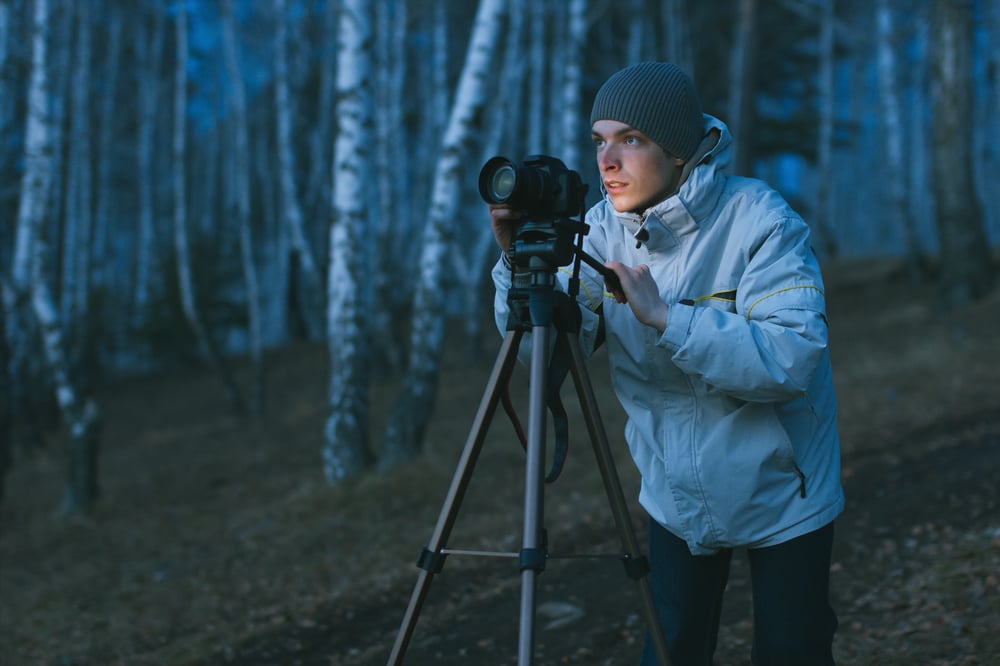
Photo by Salienko Evgenii via Shutterstock
Resolution, often measured in megapixels, is one of the first specifications that photographers look at when choosing a camera for landscape photography, largely because manufacturers plaster this all over the place as a measuring stick of the camera’s prowess…
More pixels usually mean more detail, which is crucial for printing large images, cropping, or capturing fine textures in a landscape scene. While some photographers obsess over resolution, though, it’s important to remember that cameras with fewer megapixels can still produce stunning results, especially if your goal isn’t to print at enormous sizes. So, before you drink the manufacturer’s megapixel Kool Aid, think about your final goals with your images.
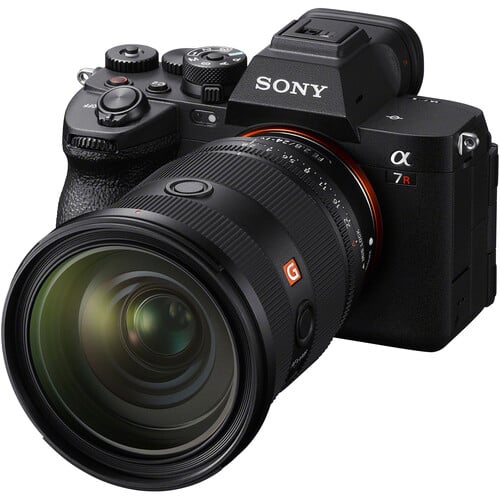
The Sony a7R V has a 61-megapixel full-frame sensor.
On the one hand, I’ve personally come to appreciate the advantages of higher resolutions, especially since I regularly print at sizes like 40×60 or larger. The ability to crop while retaining sharpness and detail is invaluable. Cameras like the Sony a7R V, Nikon Z8, and Canon EOS R5 offer impressive resolutions, making them excellent choices if value detail in large prints.
On the other hand, don’t discount a camera with fewer megapixels, especially if you prioritize other factors like low-light performance or portability. If you don’t need to print huge prints or do significant cropping, a lower-resolution camera will be just fine, too.
Image-Capture Experience: Beyond the Specs
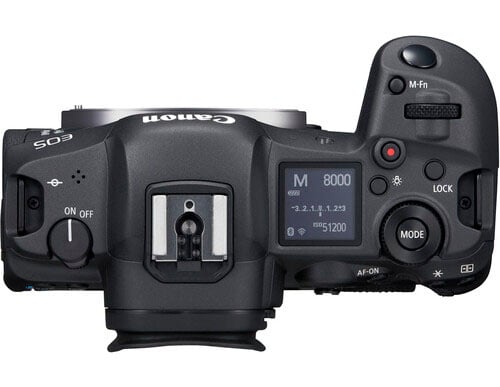
The Canon EOS R5 has user-friendly controls and an intuitive menu system.
While specs are important, the overall experience of using a camera matters just as much. The image-capture experience refers to how intuitive and enjoyable it is to make a photograph. This includes things like the quality of the viewfinder, ease of use, and ergonomics. Actually I’m going to toss in menu controls into this mashup as well. For me, this is where personal preference really comes into play.
The Best Camera for Landscape Photography Should Feel Good in the Hand
For example, I have somewhat larger hands, so I find the Sony systems when using certain lenses uncomfortable to hold as my knuckles rub against the lens. Now, I have good friends whose hands are smaller and Sony cameras feel balanced and comfortable during long shoots. This is just one difference, but it’s illustrative of how the best camera for landscape photography for one person might not be the best option for another.
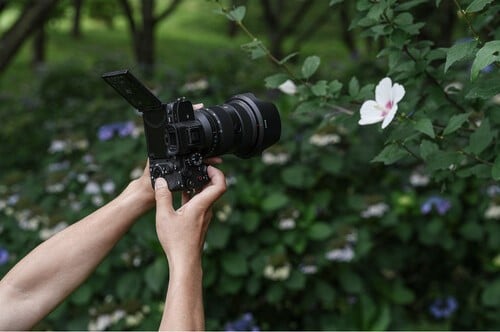
The Sony a7R V is a high-resolution camera in a very compact body.
In contrast, Canon cameras, while fantastic in their own right, can feel a bit bulkier to some folks. My R5, for example, is a bit of a big boy, and on long days of shooting, I can see how it would be easy to feel a little hand and arm fatigue if you have smaller hands or a smaller overall build.
On the flip side, photographers like me who live at the gym and have bigger hands might find Canon’s ergonomics more to their liking. As I said earlier, this is my preference, and since switching to Canon a few years ago, I’ve really enjoyed the various cameras I’ve had, including the EOS R, EOS R5, and EOS R6.
If you are starting out, test out different systems to see what feels right in your hands; after all, you’ll likely be spending a lot of time holding your camera!
Keep Reading: Best Canon Cameras for Landscape Photography
The Extras That Matter for the Best Camera for Landscape Photography
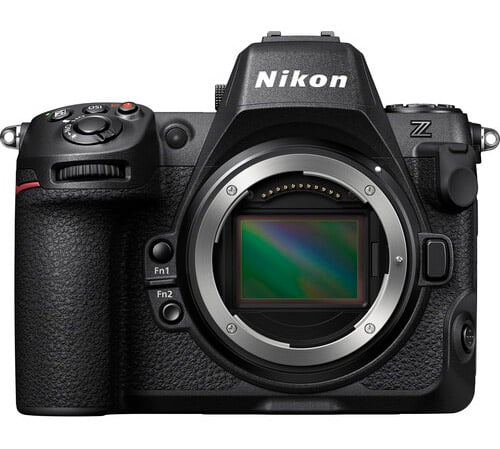
The automatic focus stacking feature on the Nikon Z8 is hugely helpful for maximizing the depth of field when shooting landscapes.
Not all cameras are created equal when it comes to features, and as a landscape photographer, you should pay attention to a few key ones…
Features like automatic focus stacking, available in the Canon EOS R5 and Nikon Z8, can be incredibly helpful for maximizing depth of field in landscape scenes. Similarly, the pinch-zoom functionality on the Nikon Z8 and Sony a7R V is a simple yet valuable tool for reviewing images on the fly.
Another game-changing feature is AI-powered subject tracking, which is becoming more common in newer models. Although more useful for wildlife photography, the precision it offers can still benefit you as a landscape photographer when tracking moving elements, like animals or waves. The Sony a7R V excels in this department, and it’s certainly a feature worth considering if you shoot other types of photography.
Cost and Value: The Full System
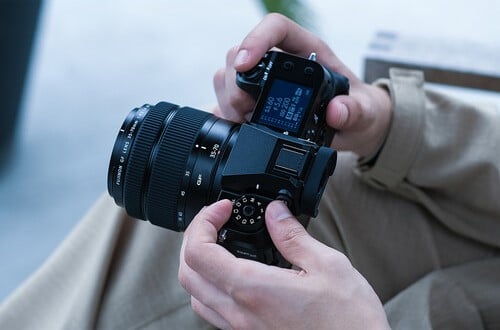
Choose from dozens of lenses compatible with the Fujifilm GFX 50S II.
When considering a camera, you can’t ignore the total cost of the system, including lenses and accessories. Mirrorless systems are becoming the new standard, which means you can often find great deals on used DSLR equipment that’s a few years old. However, if you’re starting fresh, mirrorless may be the smarter investment, as it’s where camera companies are focusing their innovations.
Shifting focus to lenses (pun intended!), Sony lenses tend to be more expensive compared to Nikon or Canon equivalents. However, they also tend to be lighter and more compact. Canon and Nikon have their own strengths, particularly with their selection of high-quality, affordable glass. When evaluating cost, think about the long-term value and how much gear you’ll need to build your complete setup.
Battery Life: An Overlooked But Important Detail for the Best Camera for Landscape Photography
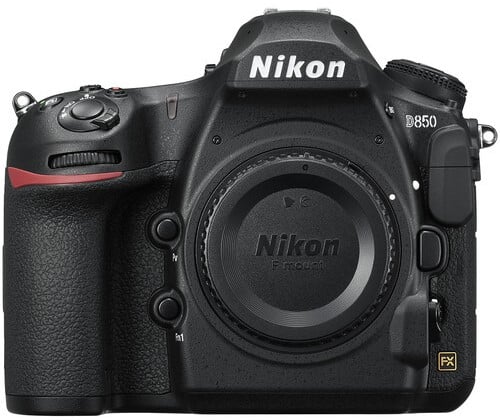
The Nikon D850 can take nearly 1,900 photos on a single battery charge.
Battery life is a crucial consideration, especially if you’re planning to shoot in remote areas where charging opportunities are limited. Early mirrorless cameras, particularly from Sony, had notoriously poor battery life (one thing that drove me up the wall!). This was a real pain when shooting in cold environments like winter scenes in the mountains. Fortunately, recent models have improved significantly in this area.
Nowadays, Sony, Canon, and Nikon mirrorless cameras all offer competitive battery performance, but it’s still something to consider if you frequently shoot in harsh conditions. Carrying spare batteries is always a good idea, but ideally, you want a camera that can last an entire day in the field without needing a recharge.
Having said that, when shooting with my Canon R5, I typically bring six batteries and dual charger with me in the field. This is part of my “be ready for anything” approach to planning and packing for a photo shoot. Though I’ve never burned through six batteries before having an opportunity to charge them, I’d rather have all that power with me than not!
Lens Ecosystem: Flexibility for Your Vision
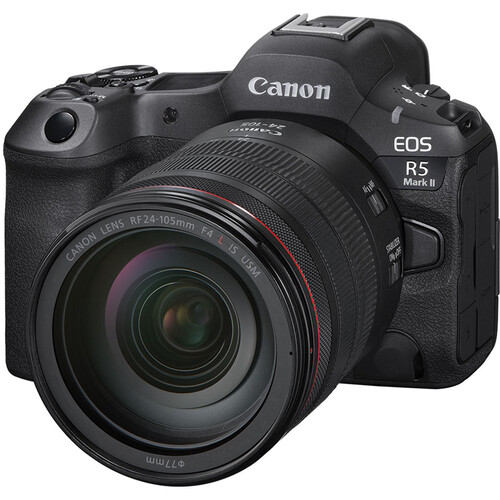
The Canon RF family of lenses includes dozens of lenses that fit the Canon EOS R5 Mark II and other EOS R cameras.
Every camera system has its own lens ecosystem, and as a landscape photographer, your lens choices are just as important as the camera body. Heck, some will even say the lenses you buy are even more important than the body you go with!
Each system offers a variety of lenses, but some are more developed than others. For example, Sony has a vast selection of native lenses for its mirrorless system, offering everything from ultra-wide primes to telephoto zooms, making it a versatile choice for landscape photography.
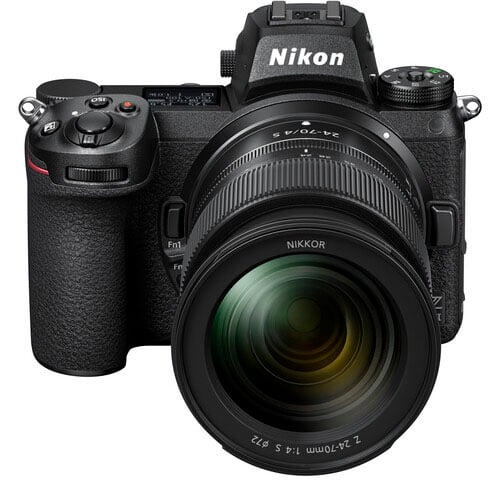
Nikon Z lenses, like the Nikkor 24-70mm f/1.4 S shown above, are known for their superb build quality and excellent sharpness.
Canon and Nikon also have robust selections, and both companies continue to expand their lineups. Nikon’s Z-mount lenses have impressed me with their sharpness and build quality, while Canon’s RF lenses are known for their optical performance. Which to be frank, was the reason I moved to Canon from Nikon back in 2020.
So, when choosing a system, think about what focal lengths you typically shoot with and what lenses are available in the system you’re considering. Doing so ensures you’ll not only get the best camera for landscape photography but also get a quality set of lenses.
Keep Reading: What are the Best Cameras for Nature Photography?
The Best Camera for Landscape Photography Has a Manageable Weight and Size
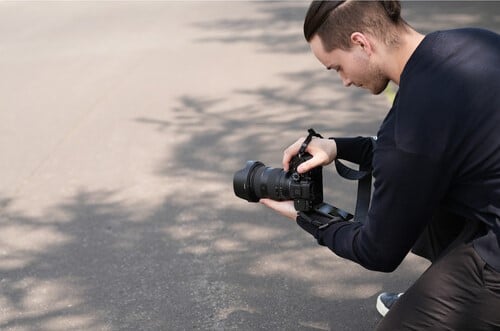
The Sony a7R V and compatible lenses are lightweight relative to other full frame mirrorless setups.
As someone who enjoys hiking and backpacking, the weight and size of my gear are critical factors. If you also trek long distances, you will appreciate lighter, more compact setups. Mirrorless cameras have a significant advantage here, as they tend to be smaller and lighter than their DSLR counterparts. As a random example that comes to mind, compare the Canon RF 70-200mm 2.8 to the older EF 70-200mm 2.8 weight. The RF is nearly a pound lighter and much more compact!
On that note, Sony’s mirrorless bodies are known for their compactness without sacrificing image quality. Nikon and Canon’s mirrorless systems are similarly designed for portability, although they can sometimes be slightly bulkier. If you’re someone who hikes 20 miles to get the perfect shot, you’ll definitely want to factor in the weight of your camera and lens system. That and invest in a good camera backpack. But we’ll discuss that in another article!
Finding the Best Camera for Landscape Photography
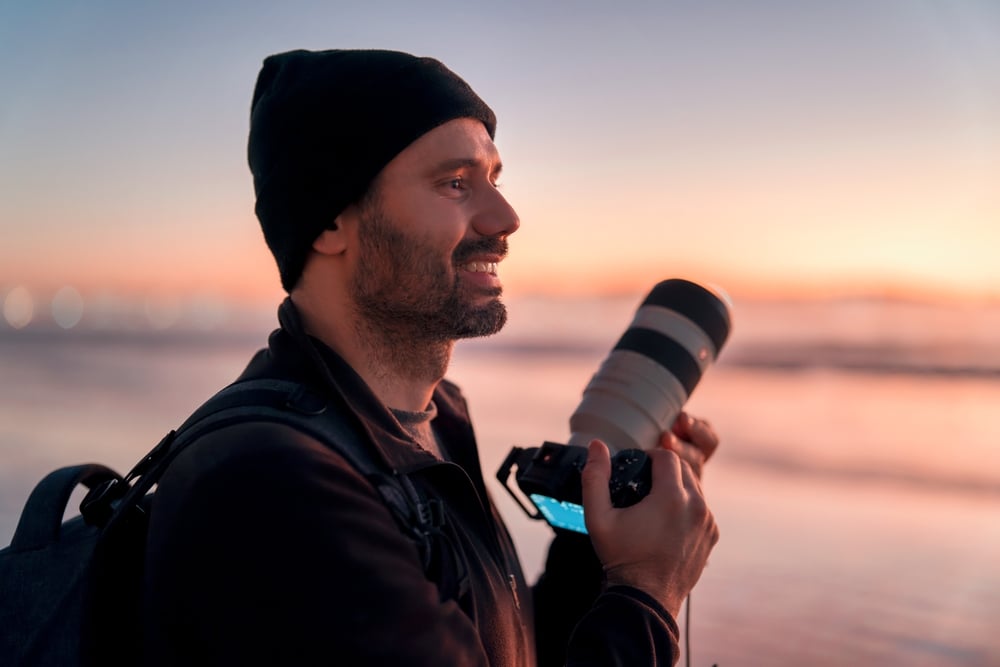
Photo by oscargutzo via Shutterstock
Look, coming full circle here, there is no one-size-fits-all solution when choosing a camera for landscape photography. The best camera for you will depend on your specific needs, preferences, and budget. Whether you like the resolution of the Sony a7R V, the features of the Canon EOS R5, or the ergonomics of the Nikon Z8, today’s cameras are more than capable of delivering stunning landscape images.
Take the time to test out different systems, consider the entire ecosystem of lenses and accessories, and think about how you’ll be using the camera in the field. With the incredible advancements in camera technology, you’re bound to find a system that helps you capture the landscapes you’ve always dreamed of.
Shifting gears, below are the best cameras for landscape photography in 2024, based on my personal experiences and testing over the years. I’ve included links to used versions of each camera (except the R5 Mark II) on MPB, my preferred online platform for buying, selling, and trading used photography gear.
Canon EOS R5
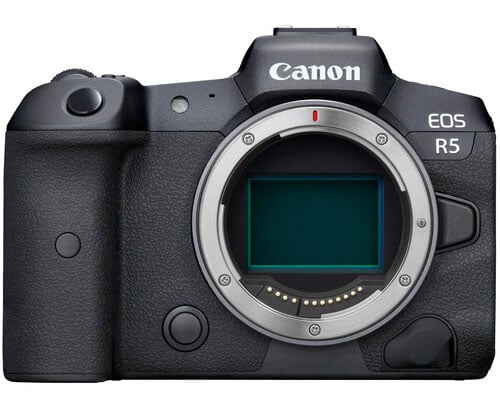
I’ve owned the Canon EOS R5 since its release, and I absolutely love it. With its 45MP full-frame sensor, this camera consistently delivers sharp, detailed images that make it perfect for landscape photography. Moreover, the in-body image stabilization has been a lifesaver on those shoots where I had to go handheld, and the dynamic range is superb, especially in high-contrast situations like sunset or sunrise.
Whether you’re printing large or shooting in challenging environments, the R5 performs like a dream. It’s truly one of the best cameras Canon has ever made.
Nikon Z7 II
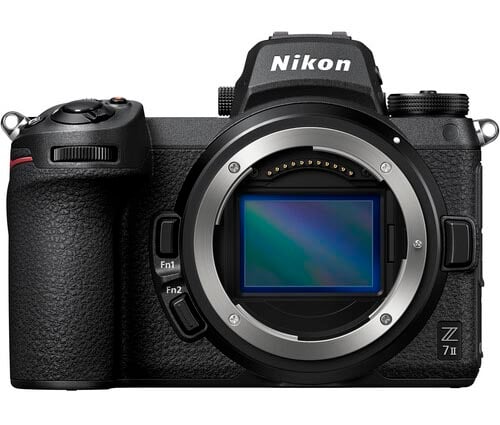
I been around the world with the original Nikon Z7, and I have to say, its performance in various environments certainly impresses. Nikon has taken what was already a fantastic camera and refined it with the Z7 II. The 45.7MP sensor provides stunning detail, and the 5-axis in-body stabilization gives you the flexibility to shoot handheld even in low-light situations.
The Z7 II is a lighter alternative to DSLRs like the D850, and if you’re planning to lug your gear around all day, this is a welcome advantage. And with the increasingly large Z-mount lens ecosystem, you have your pick of excellent glass to go with your camera!
Fujifilm GFX 50S II
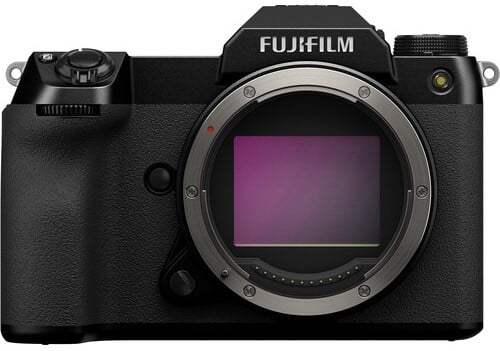
While I haven’t personally owned this camera, I have several friends who swear by the Fujifilm GFX 50S II for landscape work. From my time testing it, I found it to be an absolute dream for shooting landscapes.
The 51.4MP medium-format sensor offers incredible dynamic range, and the camera fits comfortably in hand, even for extended shoots. Despite being a medium-format camera, it’s surprisingly portable, which is a big plus when hiking to remote locations. If you’re looking for the highest quality images possible without stepping into the super-expensive territory, this is a great choice.
I’ve said it many times in past videos and articles—while the Nikon D850 might be a few years old, it remains one of my favorite cameras of all time.
This camera has been an absolute beast since its introduction, and even today in 2024, it still holds its own as a serious contender for landscape photography. The 45.7MP full-frame sensor, weather sealing, and outstanding battery life make it ideal for extended outdoor shoots. The D850’s handling and ruggedness give it that classic DSLR feel, which many photographers, including myself, still love. If you’re a fan of Nikon’s lens lineup, this camera will not disappoint.
Sony a7R V
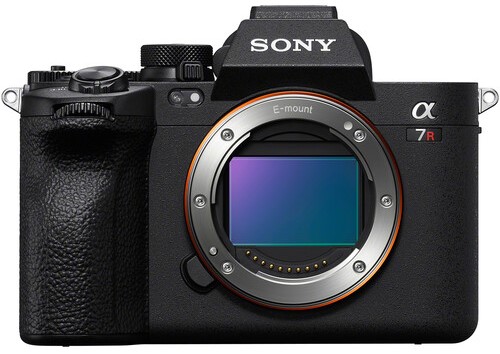
I still remember when Sony first launched the a7R series—I was flown out to Tennessee for a hands-on with the original a7R, and I fell in love with the platform immediately. I bought one the moment I returned home.
Fast forward to the a7R V, and Sony has only improved this mirrorless titan. With a 61MP sensor, this camera delivers some of the most detailed images I’ve ever seen. The advancements in autofocus and AI-driven subject tracking have made it incredibly versatile, not just for landscapes but for a variety of photography genres. It’s lightweight, compact, and continues to push the boundaries of what mirrorless systems can achieve.
Canon EOS R5 Mark II
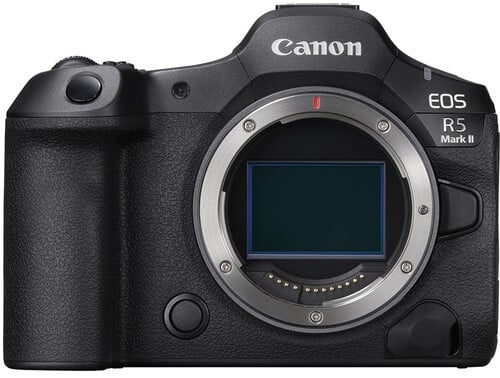
I’ve been using the original Canon R5 since it was released, and the new R5 Mark II takes everything I love about the original and makes it even better…
The 45MP back-illuminated sensor enhances low-light performance and speed, making it ideal for landscape photographers who need sharp details in challenging lighting conditions. The autofocus system has AI-driven tracking, which is especially handy for capturing dynamic scenes. It also boasts 8K video at 60fps, a huge leap for those blending video and photography. The R5 II is rugged, durable, and weather-sealed, making it a top contender for outdoor photography.
These five cameras offer a range of options depending on your needs, but all are exceptional tools for capturing stunning landscapes. Whether you’re looking for top-of-the-line resolution, portability, or a balance between both, any of these cameras will serve you well in the field.
A quick heads-up: If you snag something through our affiliate links or check out our sponsored content, we might earn a commission at no extra cost to you. But fear not, we’re all about recommending stuff we’re truly stoked about!
Learn More:
- Best Intermediate Camera for 2024: 3 Top Options
- Nikon Z5 vs Z6: Which Full-Frame Mirrorless Camera is Right for You?
Hero Photo by Gergely Zsolnai via Shutterstock


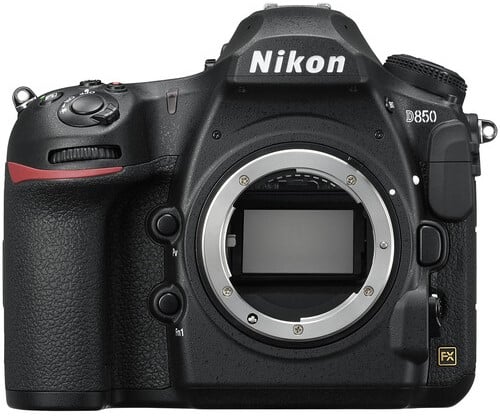
[…] Best Camera for Landscape Photography: What to Look For and Top Picks for 2024 […]
[…] Best Camera for Landscape Photography: What to Look For and Top Picks for 2024 […]
“Top Landscape Photography Cameras: Key Features and Best Picks for 2024”
[…] Best Camera for Landscape Photography: What to Look For and Top Picks for 2024 […]